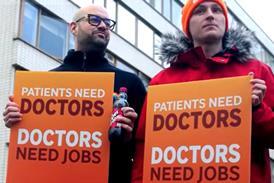In the first of a series on thought diversity as part of the Change Challenge, Philip Pearson looks at why the only way to improve the effectiveness of the services we provide is to harness the creative potential of all staff

NHS England has a profoundly diverse workforce, in terms of age, background, gender, race, religion and sexual orientation.
‘We could improve care in 10 million ways each year’
However, we are not good at harnessing the creative potential of all of the staff, not to mention the talents and views of patients, family members and carers.
This is the only way to improve the effectiveness of the services we provide, for the benefit of patients and in a timely fashion.
- Fairman: How different types of innovation can inspire change
- Visit the campaign channel for more resources
The art of paying attention
For me, thought diversity is this art of paying attention to the ideas of all staff, appreciating that each has the best understanding of what they do and where the issues are.
‘This Japanese technique has been successful in several industries and functions’
With good leadership, some instruction and encouragement, they are also best placed to develop and implement measures to solve those issues.
Best known as kaizen teian, this Japanese technique has been (especially in Toyota) the core belief underpinning the continuous improvement through proposal that has been used successfully in several industries and functions.
Training within industry
The idea was originally exported to Japan from the US after the Second World War.
In the US, there was a need to produce high quality material for the war effort, but there were neither time nor resources to do it in the traditional way. Therefore a programme of “training within industry” was developed, guided by the following key principles:
- pay respectful attention to all employees, seeing each one as a source of ideas for improvement, information and suggestions;
- look for the many small things that can be improved; and
- make do with what we have (there is no more time or money).
In the current financial context of NHS England, this may not sound like much of a call to arms, but the effects can be profound.
‘We would have more effective, less costly care using the diversity of ideas from our own staff’
If we assume there are 1 million staff in the NHS, and each were to come up with only one implementable proposal per month, we could improve care in more than 10 million ways each year; and if each idea saved less than £2 per week (say, £100 per year), that reduces the cost by £1bn.
Furthermore, because this is waste reduction, not cost cutting, the effects are cumulative, potentially saving £15 bn in total over five years.
If we reached 18 proposals per staff member per year, the initial figure would be £1.62 bn per year (£25.9 bn over five years). Therefore, we would have more effective, less costly care, using the diversity of ideas from our own staff.
Dr Philip Pearson is a consultant respiratory physician at Northampton General Hospital and clinical lead/senior lecturer for undergraduate quality improvement and patient safety at Leicester Medical School
























4 Readers' comments